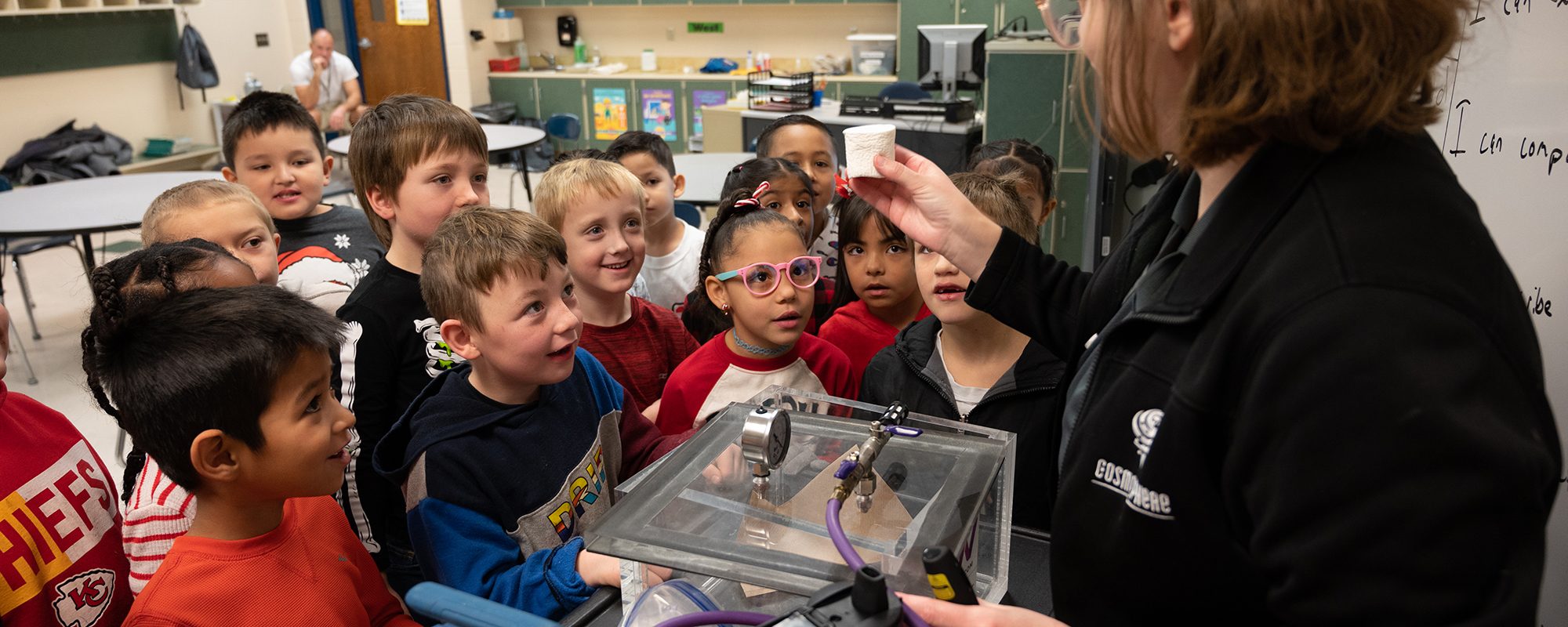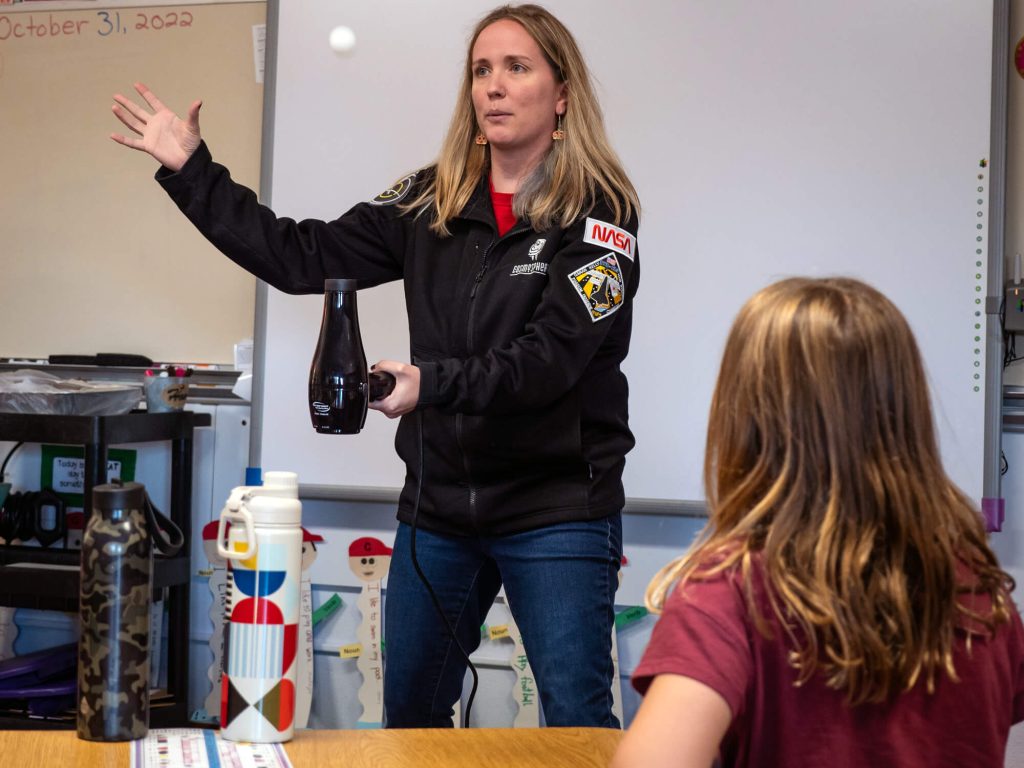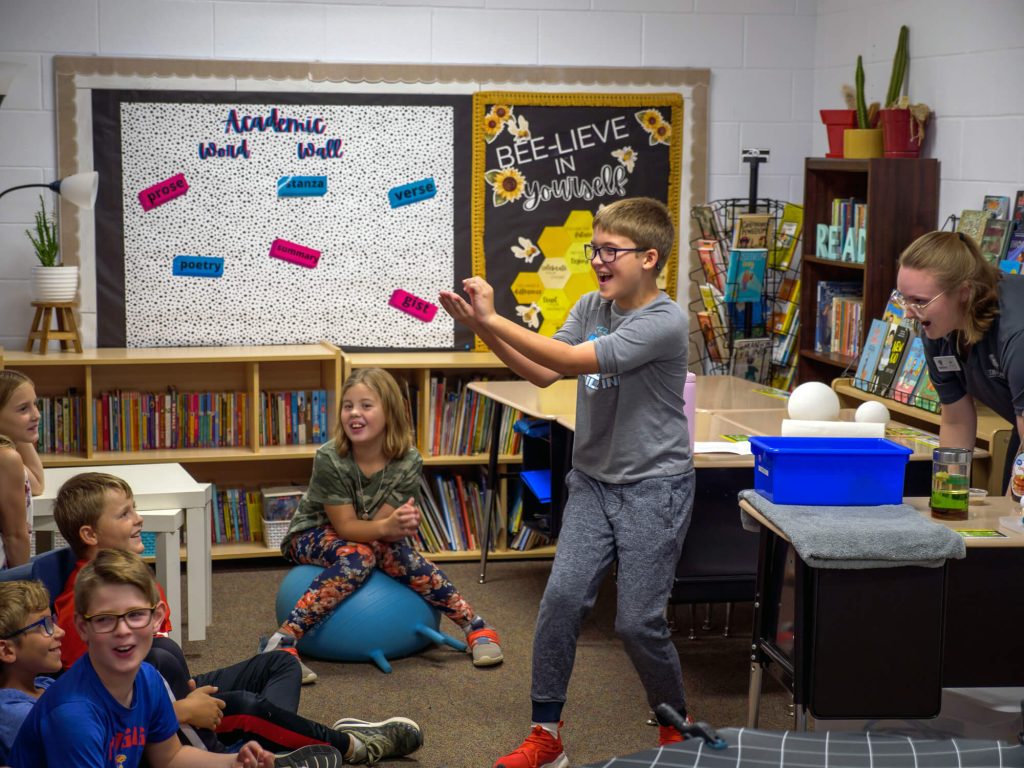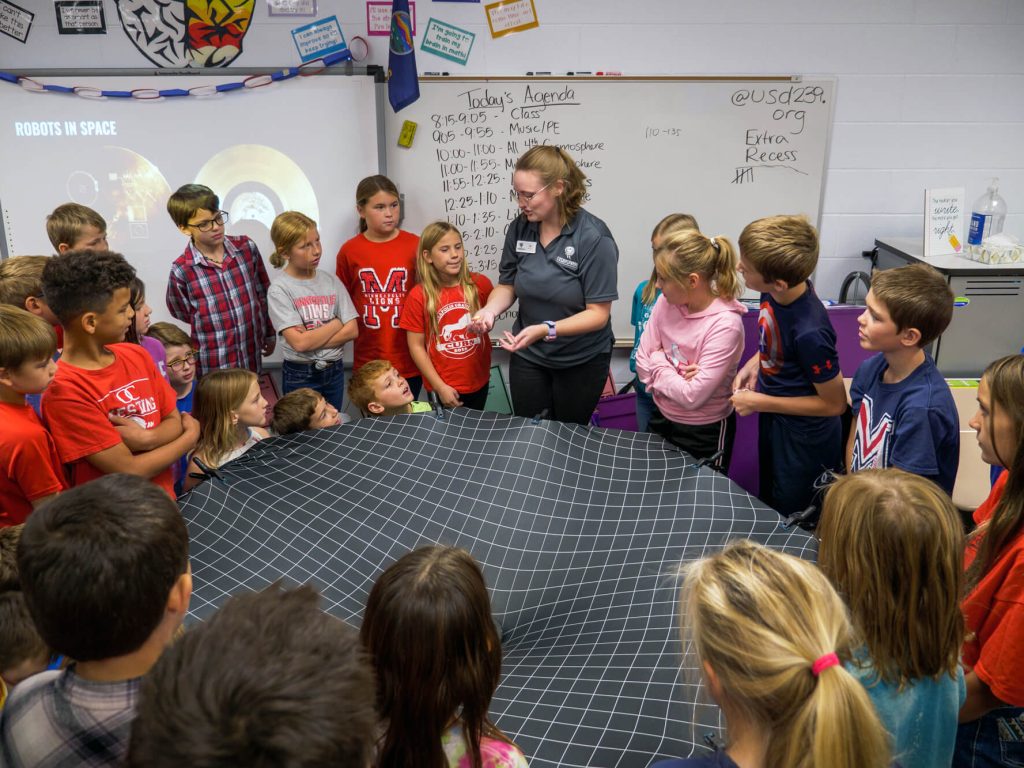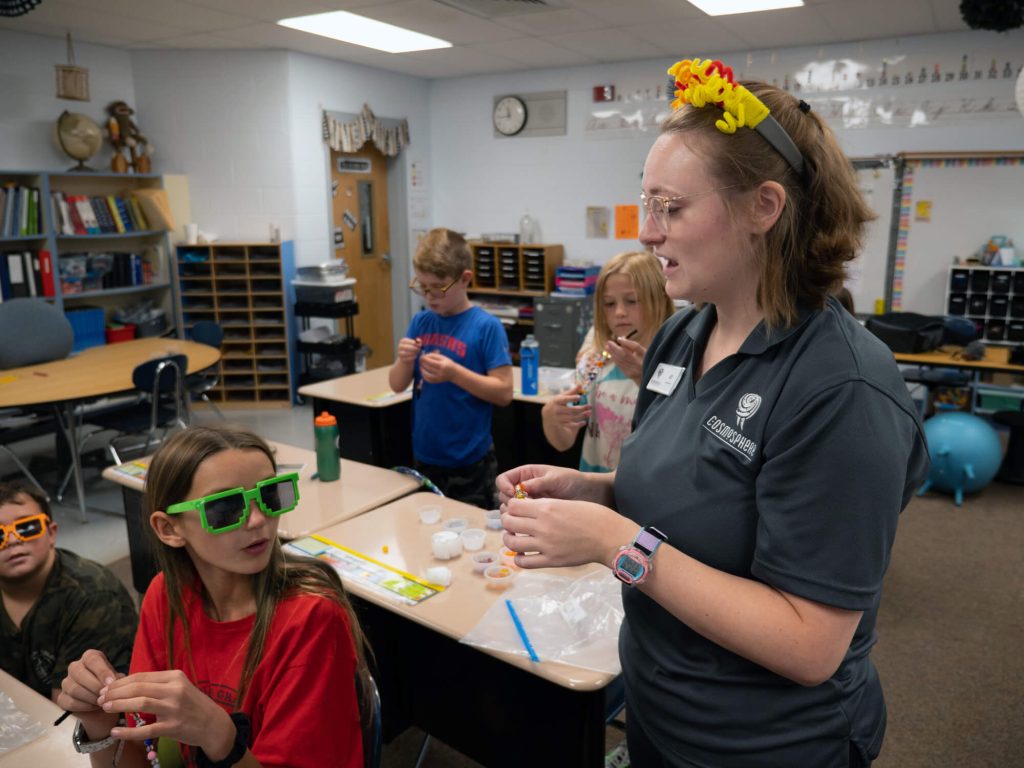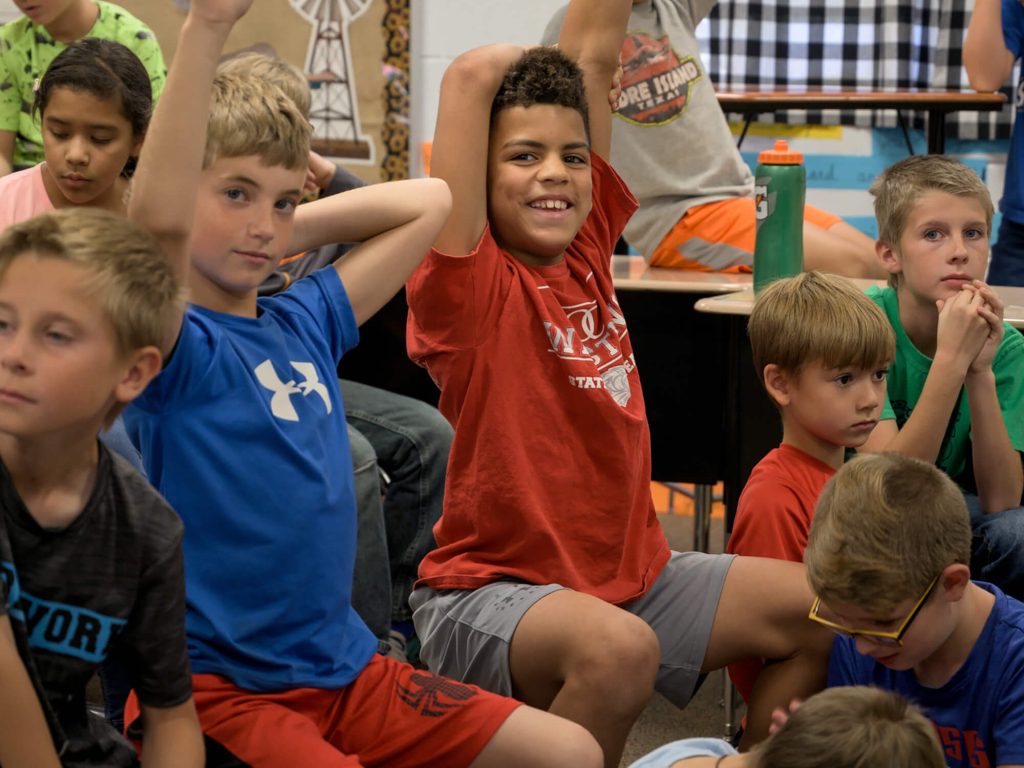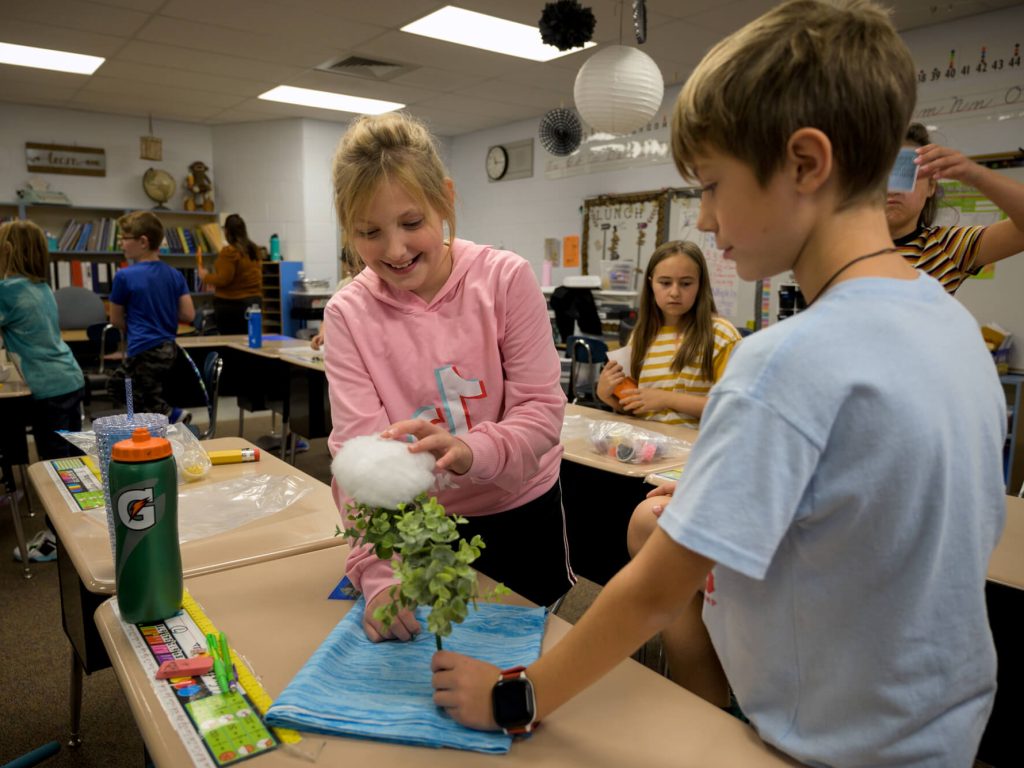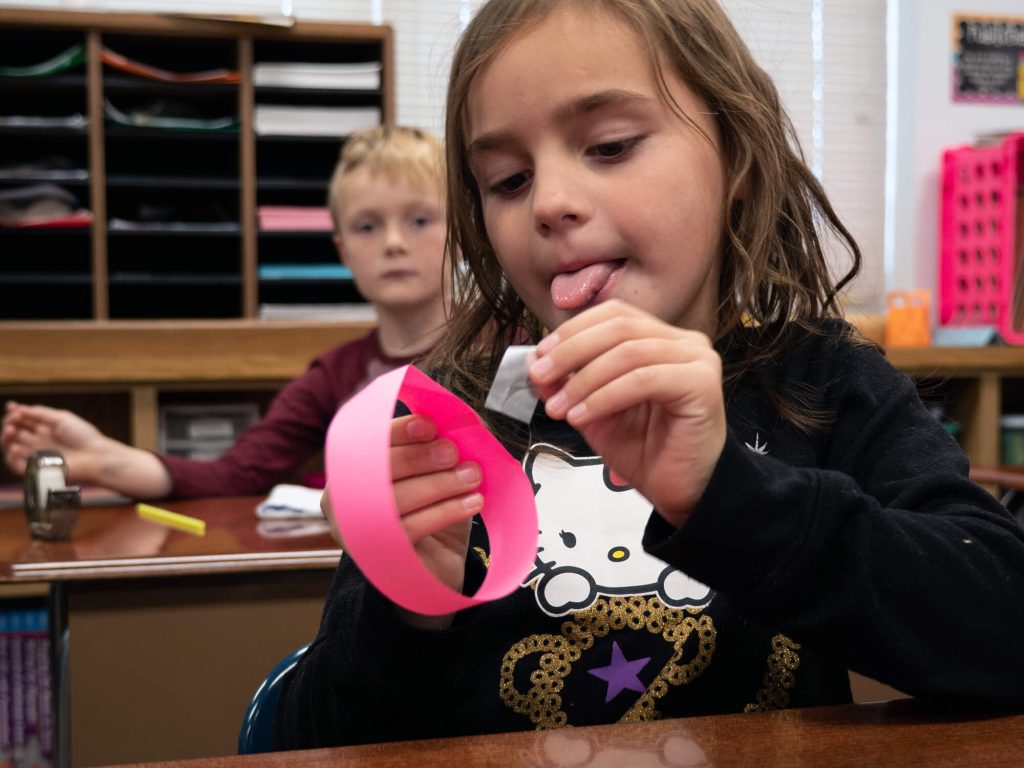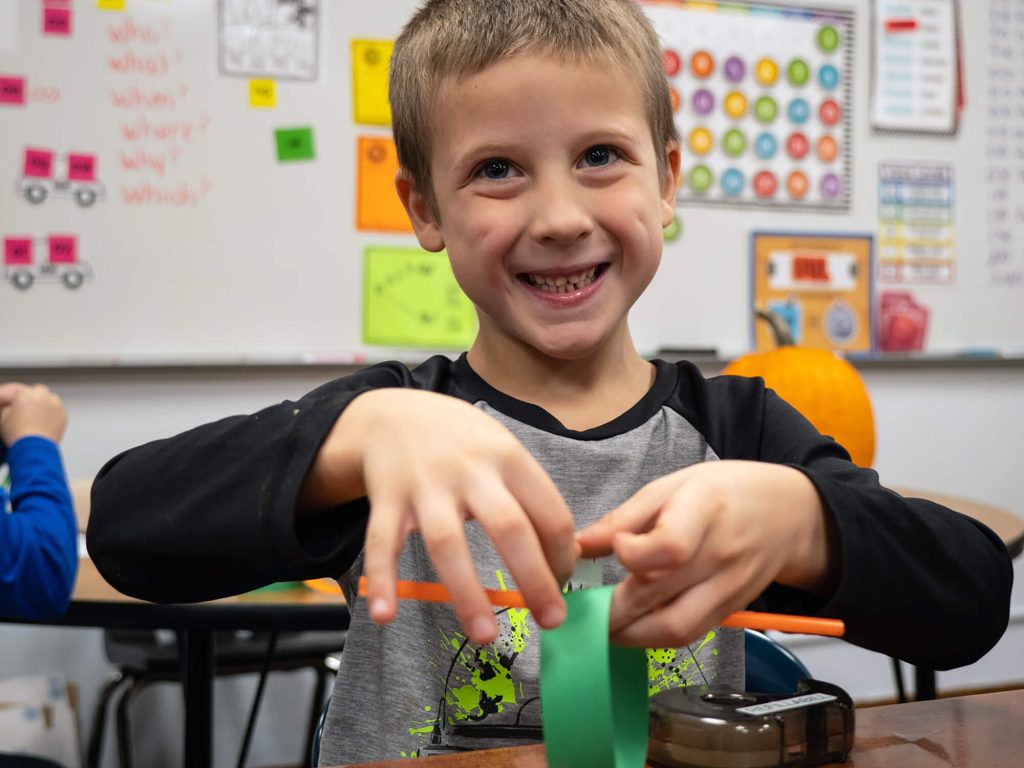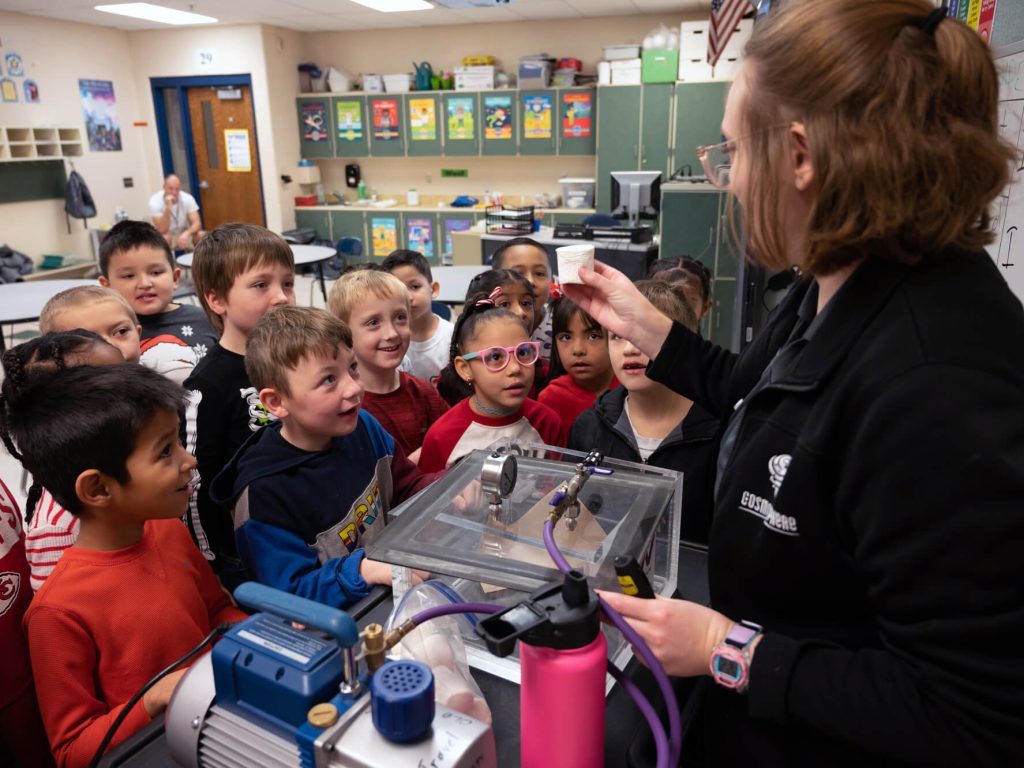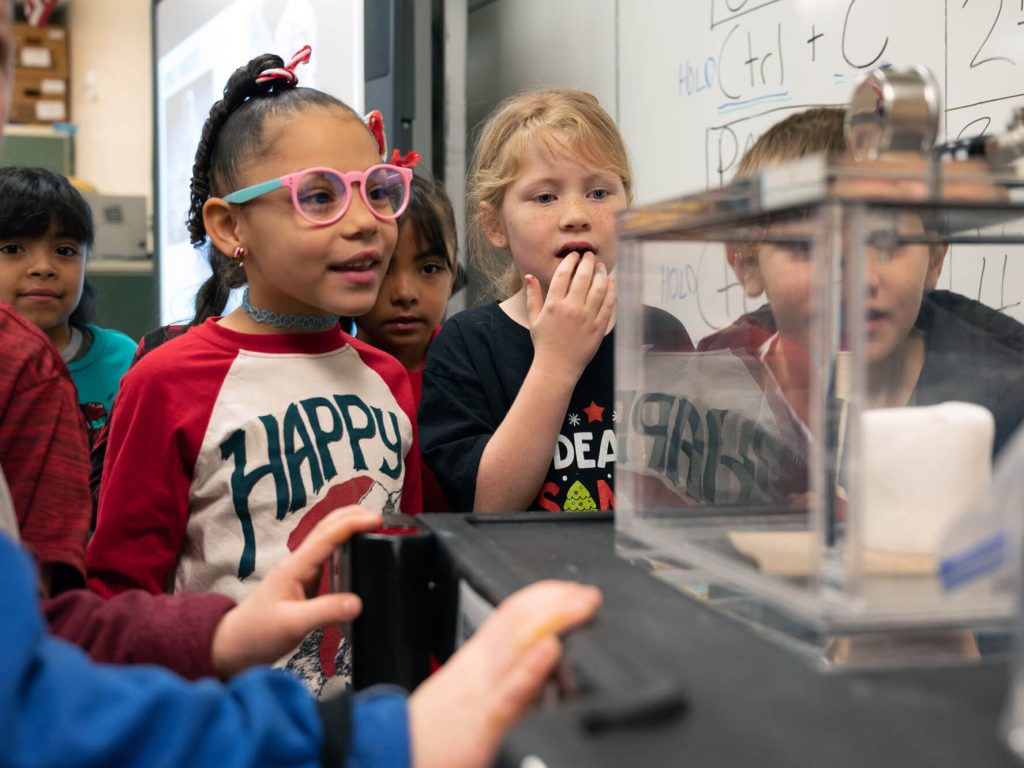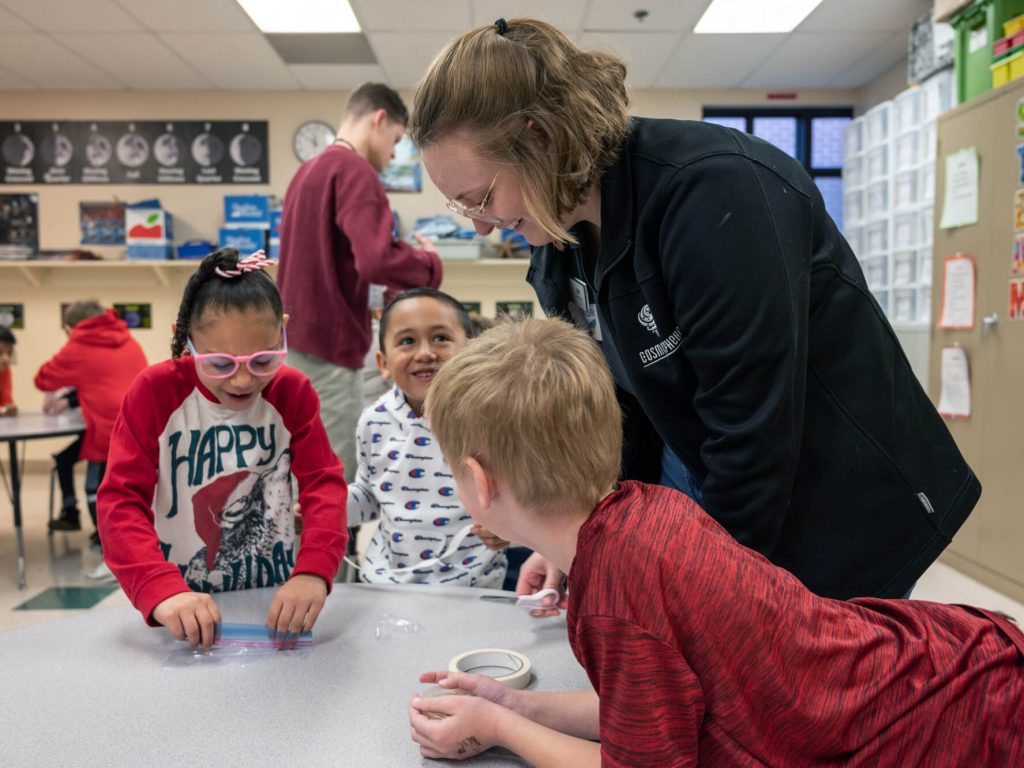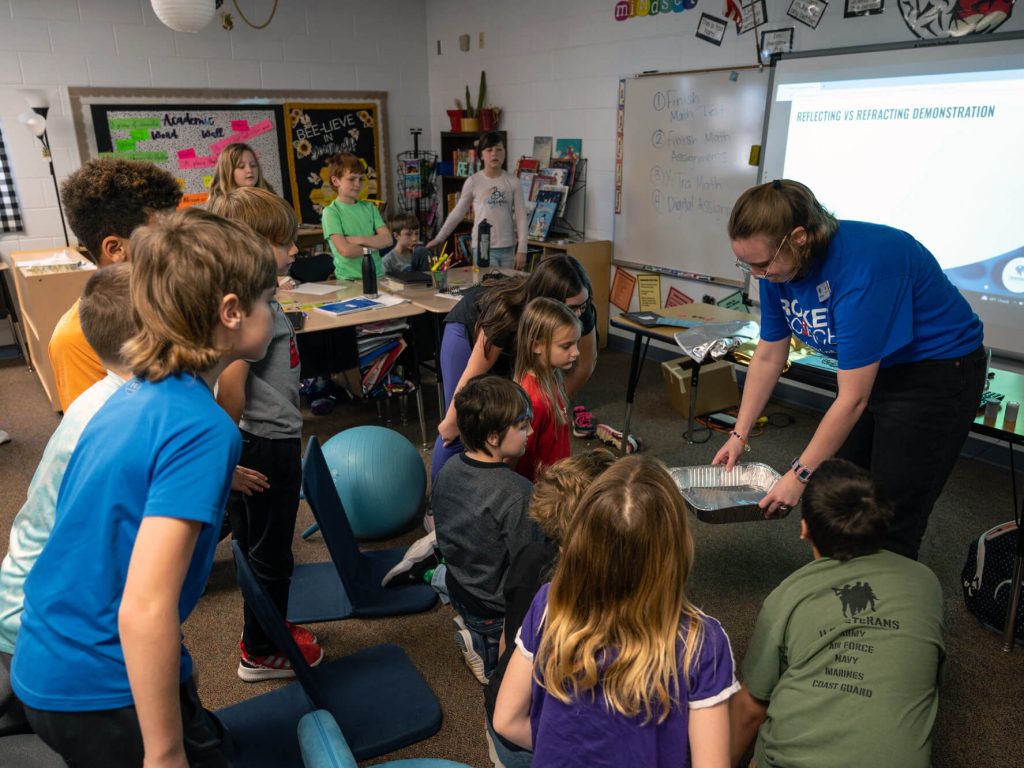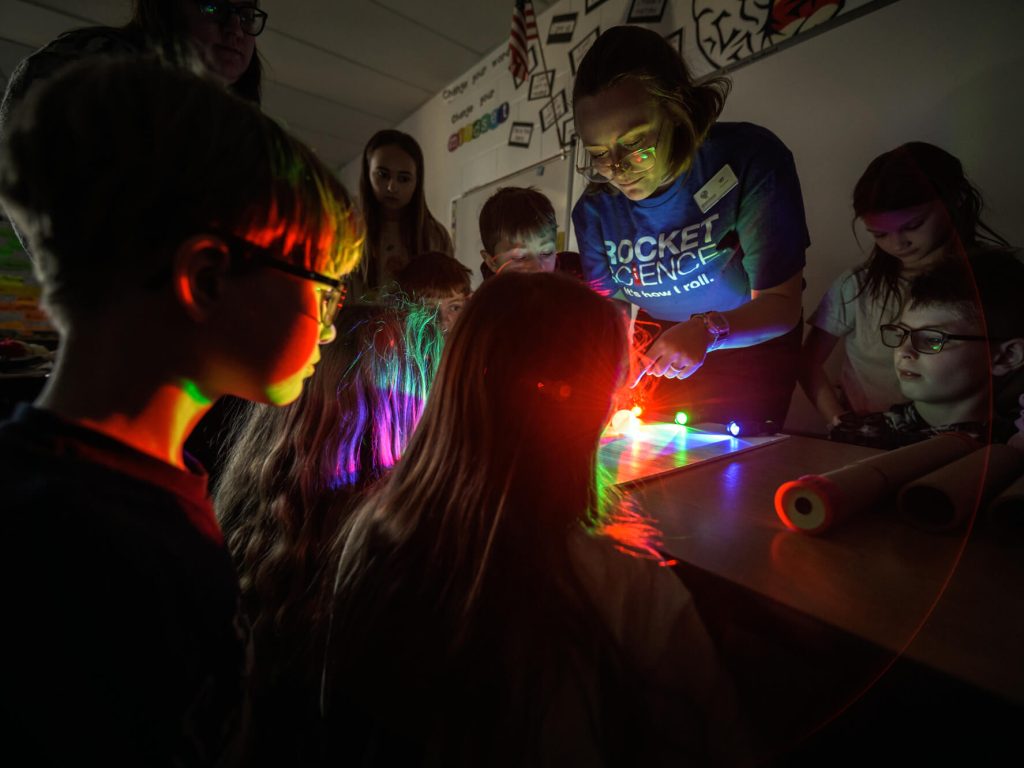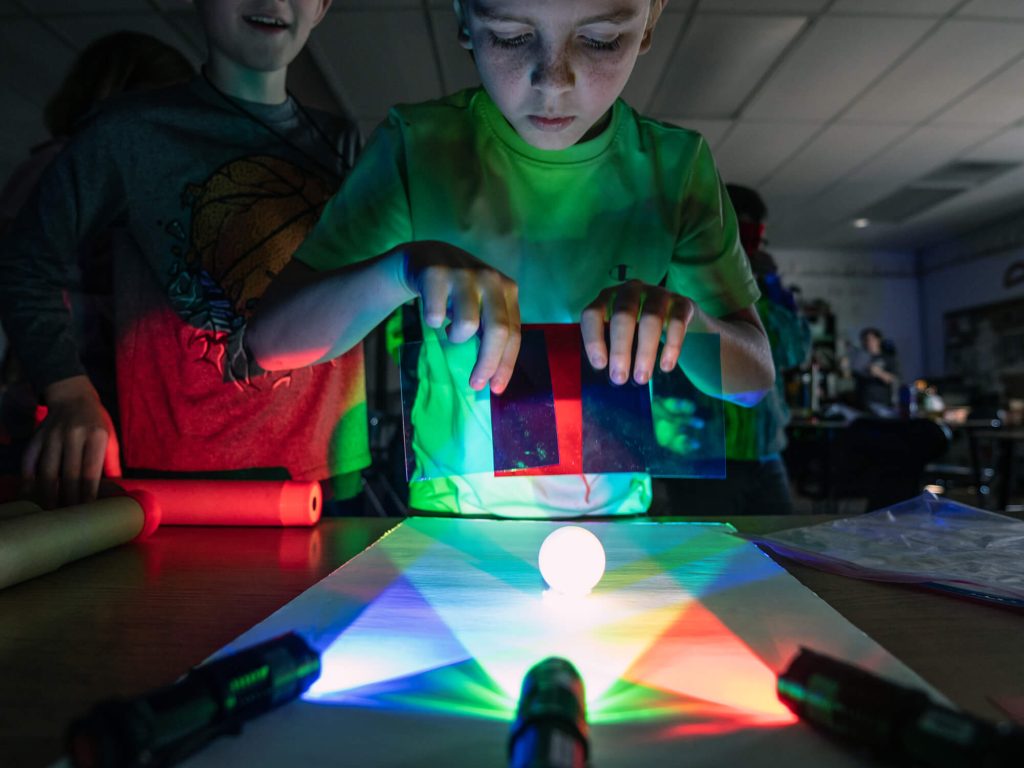Can’t travel to the Cosmosphere? Bring the Cosmosphere to you!
Bring the Cosmosphere to your classroom – as awesome Cosmosphere STEAM educators travel to YOU for presentations and hands-on activities while delivering NGSS-aligned content and promoting student engagement.
Outreach
Includes STEAM educational activities ranging from grades K-12. Each subject consists of a 45-minute presentation and 45-minute hands-on activity. No need to worry—the presentations include engaging demonstrations designed to captivate students’ attention.
When scheduling outreach programs, it is best to include both the presentation and the activity; however, we also offer options to schedule just the presentation or just the activity. Exceptions are Robotics (no presentation), the Solar System (this is a combined presentation/activity), and the traveling planetarium (no activity).
- Full-day educational STEAM activities (K-12)
- Rockets (K-12)
- Presentation: Students take a trip back to the 1930s lab of Dr. Robert Goddard, the father of modern rocketry. This interactive show uses live demonstrations on a journey through the history of rockets. NGSS-aligned: K-PS2-1; K-PS2-2; 3-PS2-1; 3-PS2-2; MS-PS2-1; MS-PS2-2; HS-PS2-1
- Activity: Students will build and launch air rockets, testing different methods to achieve the farthest flight. NGSS-aligned: K-2-ETS1-3; 3-5-ETS1-1; 3-5-ETS1-2; 3-5-ETS1-3; MS-ETS1-1; MS-ETS1-2; MS-ETS1-4; HS-ETS1-2; HS-ETS1-3
- Weather/Climate (K-12)
- Presentation: Explore the scientific principles behind cloud formation, humidity, and what causes weather changes. NGSS-aligned: K-ESS2-1; 3-ESS2-1; MS-ESS2-5
- Activity: Design and build a structure that protects people from weather hazards such as rain, wind, and snow. NGSS-aligned: K-PS3-2; K-2-ETS1-1; 3-ESS3-1; 3-5-ETS1-1; MS-ETS1-1; HS-ETS1-3
- Energy (3-12)
- Presentation: Energy is everywhere. Learn what it is, how we use it, and why it is essential. NGSS-aligned: 4-PS3-2; MS-PS3-2; MS-PS3-5
- Activity: Learn how batteries work by building one to power an LED light. NGSS- aligned: 4-PS3-2; 4-PS3-4; MS-PS2-3; HS-PS3-3
- Living in Space (K-12)
- Presentation: Sleeping, eating, and going to the bathroom differ greatly in space. Learn what it’s like to live in space! NGSS-aligned: K-LS1-1; K-ESS2-2; KESS3-1; 3-LS4-3; LS3-2; MS-LS2-3
- Activity: Trying to eat in space is quite a bit harder than on Earth. Students will design and create their space food containers that can be used to hold, cook, and eat food in microgravity. NGSS aligned: K-2-ETS1-1; 3-5-ETS1-1; MS-ETS1-1; HS-ETS1-3
- Solar System (K-8) – Needs 1.5 hours instead of 45 minutes
- Activity: Dive deep into each planet and discover what makes each an exciting place to explore while students create a solar system bracelet. NGSS-aligned: MS-ESS1-3
- Robots! (K-12)
- Activity: K-2 students will explore programming through colors using Spehro Indis. 3-12 students will program Sphero BOLT robots to navigate a maze.
- Beyond Our Solar System (3-12)
- Presentation: Learn about what exists beyond our solar system and how we learn about objects so far away. NGSS-aligned: HS-ESS1-1
- Activity: Students will mimic real astrobiologists and perform tests on different exoplanets to determine if they could sustain alien life. (This activity requires a classroom that can be in complete darkness). NGSS-aligned: MS-PS4-2
- Lunar Landers (K-12)
- Presentation: Introduces students to the problem-solving process using the construction of the lunar lander as a model.
- Activity: Design and build a new model lunar lander to deliver people (marshmallows) to the Moon safely. NGSS-aligned: K-2-ETS1-1; K-2-ETS1-2; 3-5-ETS1-1; 3-5-ETS1-2; 3-5-ETS1-3; MS-PS2-1; MS-ETS1-1; MS-ETS1-2; MS-ETS1-4; HS-PS2-3; HS-ETS1-2; HS-ETS1-3
- Space Photography (3-12)
- Presentation: Students will learn how space telescopes like Hubble and Webb take pictures of faraway places and explore how taking photos in different wavelengths in the EM Spectrum gives us information about these places. NGSS-aligned: 4-PS4-2
- Activity: Create pictures using UV radiation from the sun.
- Electricity (3-12)
- Presentation: Learn the scientific principles behind how electricity works. NGSS-aligned: MS-PS2-4; HS-PS2-5
- Activity: Build circuits to make an explosive hatch just like the one on the Mercury capsule. NGSS-aligned: 3-PS2-3; MS-ETS1-1; MS-ETS1-2; MS-ETS1-4; HS-ETS1-2; HS-ETS1-3
- Characteristics of Life (3-12)
- Presentation: Students will learn about the different characteristics of life and debate if a candle is considered alive based on these criteria. NGSS-aligned: MS-LS1-1
- Activity: Students will solve the crime of who stole the Comsophere moon rock using fingerprints and DNA.
- Traveling Planetarium (K-12)
- Presentation: Students can observe the night sky right in their classroom! Learn about constellations, planets, and much more. Requires a large space such as a gym to set up. Available in January 2025.
Per day: $800
Travel time: $30/hour (first hour is free)
(Two week advance registration required)
Dane G. Hansen Schools Outreach
Through a grant from the Dane G. Hansen Foundation, Cosmosphere educators serve schools in the 24 Northwest Kansas counties served by the Foundation. This outreach service brings live STEAM activities, science interaction, and subject matter experts to students who might otherwise not experience the Cosmosphere.
Bring Space to Your Classroom
If you’re a Dane G. Hansen school, contact us to schedule your outreach.
"*" indicates required fields
Questions about Outreach?
Call Us
620.665.9334 direct
800.397.0330 x334 toll-free
